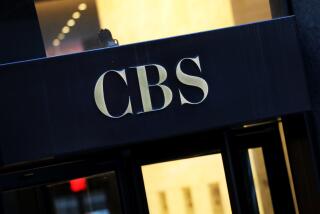It is built, now will they come?
On New Year’s Eve 1999, television coverage hopscotched around the globe to document the night with images of huge gatherings in famous city squares, urban parks and at legendary landmarks. An avalanche of confetti fell on the New Yorkers jammed in Times Square, Parisians frolicked at the foot of the Eiffel Tower, and 3 million Germans gathered around the polished red granite of the Victory Column in Berlin. Similar scenes played out in Beijing and Boston, London and Sydney, Tokyo and Chicago.
And what was the proud civic image beamed to the world from Los Angeles? It was the iconic Hollywood sign, lonely up on its hill, cloaked in fake fog and flickering with strobe and laser light. There was not a soul in sight. The message from L.A. to the world: Who needs living, breathing people when you have a logo with 50-foot letters and special effects?
If Los Angeles ever seemed like an un-centered city, it was that feckless night. There may never be a repeat of it though, because, for better or worse, a $2.5-billion project to create a so-called Times Square West is poised for its first opening night: Next Thursday, the Nokia Theatre, a 7,100-seat venue billed as one of the most acoustically sophisticated spaces anywhere, will open with a double bill of the Eagles (the band that has the bestselling album in U.S. history) and the Dixie Chicks (who this year dominated the top Grammy categories, winning for best album, song and record).
The Nokia is a centerpiece of the deliriously ambitious project called L.A. Live, which is nothing less than an attempt to tilt the city’s skyline to the south. The project covers 4 million square feet spreading out from Staples Center and the L.A. Convention Center; it will include a 54-story tower that will house condos as well as a 123-room Ritz-Carlton and a 878-room J.W. Marriott hotel, the new studios of ESPN, a Grammy museum, movie theaters, restaurants, apartments, nightclubs and a Lucky Strike bowling alley. It will take two more years before much of that is finished, but L.A. will get its first glimpse of its promise with the premiere night at the Nokia Theatre and its 40,000-square-foot plaza, which together should give the camera crews a better place to count down the last minutes of the year.
“As far as a public gathering place and a center for a world-class entrepreneurial city, we are going from nowhere to the very best, we are going from a disaster to being a role model,” says Timothy J. Leiweke, president and chief executive of AEG Live, the company that owns and operates L.A. Live. “It’s incredible what is happening in Los Angeles and what this project will mean.”
The project will certainly mean many different things to many people, but not everyone’s perspective will be as sunny as Leiweke’s. There are already critics who say the development straddling Figueroa Street will be too oppressive, too glossy and too detached from the rest of downtown in spirit and aesthetics. Competitors wailed when the hotel component of L.A. Live got special consideration from the city in the form of loans and hotel-tax rebates. And activists have questioned whether a project catering to the affluent and wealthy is the best way to help a downtown with entrenched issues such as homelessness.
Champions of the project, meanwhile, see it as a chance to infuse energy and investment and goose the visiting convention business. There’s also the philosophy that bringing more people from around the region to eat, shop and be entertained will lead to more money and identity for a place that, a decade and a half ago, was a concrete ghost town at night.
Here’s one thing that appears certain: The Nokia Theatre brings with it the promise of a scintillating new mid-size music and entertainment venue to the second-largest city in the country.
THE Nokia Theatre sits like a little sister next to Staples Center and, from the street, their metallic swoops, glowing grids and digital ribbons make the family resemblance obvious. There are substantial differences inside, however. Staples (which seats up to 20,000 in some concert configurations) is far more concrete and utilitarian for obvious reasons -- who wants hockey games in an overly plush setting? -- and the acoustics are tricky because it was built with the conflicting imperatives of giving the Lakers a home-court advantage (which means echoing the cheers of fans back down) and also making sure that rock guitar solos don’t ricochet out of control.
“We didn’t mess around with the sound with the Nokia Theatre,” Leiweke said. “We spent a fortune to make sure it has the best sound possible.”
Last week, the chairs were bolted into the wide floor of the Nokia, and the place does look impressive. No seat is farther than 220 feet from the stage.
To maximize space for production and seating, much of the food storage and preparation will be done at Staples and wheeled over via an underground tunnel; other staffing needs are also housed on the other side of Chick Hearn Court. (That quick jaunt raises an intriguing possibility: One of these nights, will the Kings, Lakers or Clippers have the national anthem performed by a superstar booked at the Nokia?)
The venue is filled with glowing light; there are 5,000 square feet of LED screens in, on or around the theater and plaza, and the color of the entire building can switch from red to blue to green to white. The video screens everywhere, including atop towers in the plaza, are geared to make events larger than life in the eyes of a crowd that, with street closures, can bump up into the tens of thousands.
“This is,” Leiweke said, “the Radio City Music Hall for the 21st century.”
With a stage 180 feet wide and 80 feet deep, and a sophisticated lowering catwalk and rigging system, the venue is also positioning itself as a state-of-the art site for awards shows. As a result, the Shrine Auditorium and the Gibson Amphitheatre appear to be losing traction with producers who specialize in envelope shows.
Dick Clark Productions signed up first and, on Nov. 18, will make the American Music Awards on ABC the first major broadcast from the venue. That company is also behind the Golden Globes, and there is speculation they will be moving into the new digs as well, especially with the lure of the planned hotel ballrooms for after-parties.
That lure may help close the deal with the Emmys as well. AEG has been flirting with that show’s producers for years, and although no final word has been given, the TV academy’s board of governors gave preliminary approval in May to a 10-year deal with the Nokia venue.
That same month, AEG announced a strategic alliance to promote the brand of Nielsen’s Billboard, hints that the Billboard Music Awards and the Billboard Latin Music Awards could soon be tenants as well.
The Latin Grammys seem a natural for the site, and Leiweke made it clear he was in hot pursuit of MTV’s award shows and the ESPYs.
“I think you’re going to see boxing in there too,” Leiweke said. “We are the promoters booking the building, and we are going to take a lot of risks. There are also the corporate events and private functions. It’s a dynamic building, and there are going to be exciting things there. We’ve opened a lot of venues in a lot of cities and when people ask me which is my favorite, I always say, ‘The next one.’ But this one is going to be very special for a very long time.”
--
More to Read
The biggest entertainment stories
Get our big stories about Hollywood, film, television, music, arts, culture and more right in your inbox as soon as they publish.
You may occasionally receive promotional content from the Los Angeles Times.










